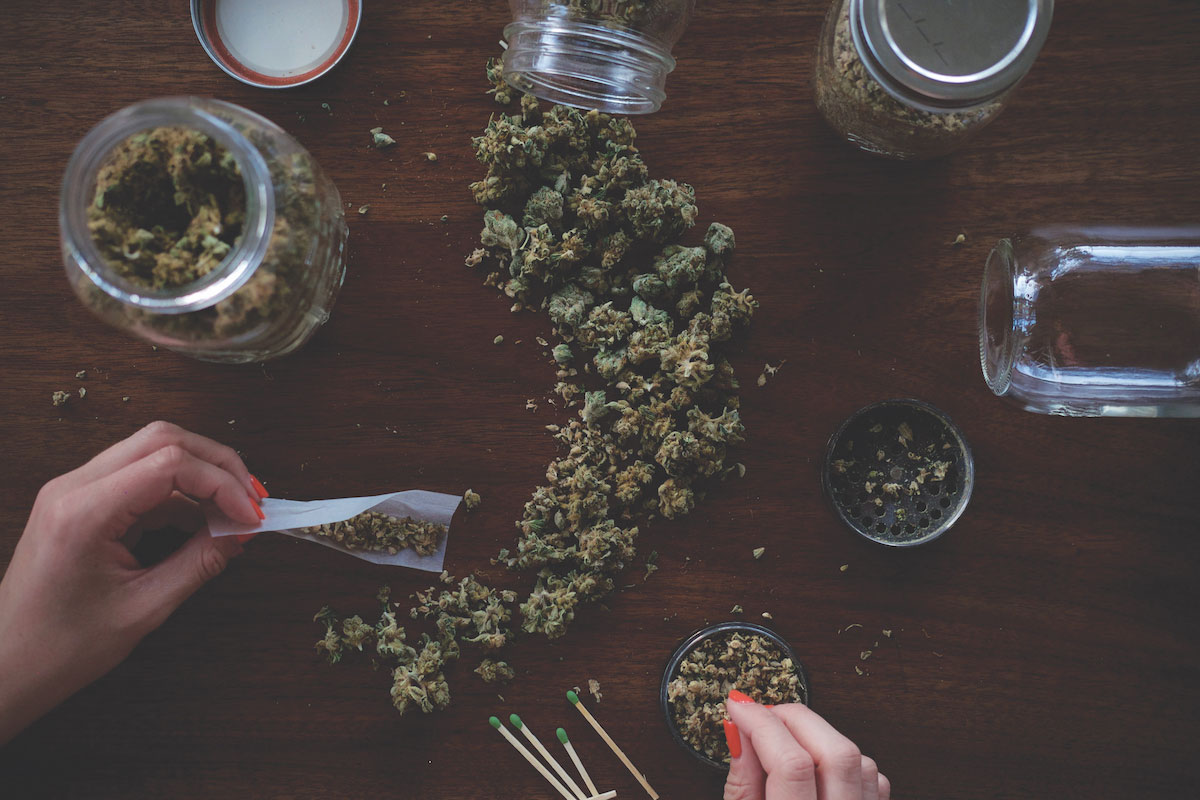4/20 is the cannabis enthusiast’s equivalent of Easter, Earth Day and the Super Bowl all rolled into one big fatty. But have you ever heard of 421?
421 Group is a business consultancy based in Sebastopol with a focus, as its name suggests, on what’s next in cannabis. A few years ago, when I was—full disclosure—a strategy consultant for 421, the focus was on designing new companies and getting them through the new and evolving permitting processes at the state and local level.
With the legal cannabis industry in a bit of a freefall over the last year, despite the obvious uptick in cannabis consumption, I reached out to my old buddy, 421 Group partner and COO Johnny Nolen, to find out what is next in cannabis innovation?
THC vs Entourage
With the concept of THC—the chemical abbreviation of the main psychoactive component of cannabis—rising to the center of collective stoner consciousness in the last decade, something has been left behind. It is called the entourage effect and comes from metabolizing THC in conjunction with other cannabinoids.
“[Suddenly] it’s, ‘Oh shit. We took all the good stuff out,’” said Nolen, reflecting on the ongoing trend of higher and higher THC percentages. “You don’t have the same robust, wonderful full mind-body-spirit euphoria high from 99% THC…THC does one thing. It’s the whole, you know, pile of stuff that makes the different highs really interesting and enjoyable.”
Now the trend is heading in the opposite direction. Products like “live rosins [are] bringing more of the plant in,” said Nolen. Even though they have lower percentages in terms of THC, these ”broad spectrum oils, which are less refined and less distilled, [are bringing] more of [the full experience] back,” he continued.
Trend summary: Cannabis has always been more than THC. Let weed be weed.
Nanotechnology: Not just for supervillains anymore.
Nolen’s other venture, which shares talent and DNA with 421 Group, is the Resourcery, a white label manufacturer and distributor. Have a dispensary and want your own brand of vapes? Cultivator looking to increase your margins with value-adding extractions? If so, check out the Resourcery.
“Personally, [one thing] I get really excited about when I experience it as a consumer is nano-emulsion of ingredients into edibles and tinctures,” said Nolen, before describing the process, which is more and more in demand for Resourcery’s clients.
“The delivery [of nanoemulsion cannabinoids] is so much more effective and efficient,” enthused Nolen. “It’ll go through the skin of your mouth. [They are] tiny, tiny little particles.”
This is totally different from the old-school space brownie, “Delta 11, Alice in Wonderland, edible 14 hours kind of experience,” laughed Nolen. “With the nano, it starts absorbing into your bloodstream as soon as it hits your tongue. [And] once it’s in your bloodstream, it’s like you vaped. [A] two to five minute onset for most of them, [with] a shorter [duration] of like two hours, like vaping.”
This sounds good to me, since I have found myself too often at 7pm realizing it’s suddenly too late for my gummy. Said Nolen, “So you don’t have that, ‘Oh boy, man I got to go to work tomorrow and I want to get a little high, but I don’t want to be high for the whole rest of my life.”
More recently, the Resourcery team has launched Phytomagic, a new brand that adds technology upgrades to some long-loved west county Sonoma herbal infused cannabis tinctures, including those known as Granny Jane’s (maker of this writer’s anniversary night to-go, “Pan-nabis”). These tinctures, based on those classic formulas, now use the nano-emulsion tech to get you perfect quickly.
“I think [nano will] be the standard within five years,” said Nolen. “Nobody’s gonna put straight distillate into their edibles anymore [now that] we realize we could have it this way.”
“Super exciting. I was just taste testing them, so full disclosure: all non-THC, but I have eaten a lot of herbal tinctures today,” smiled Nolen, cheeks possibly a little rosey over Zoom. “Lots of skullcap and lemon balm and ginger going on here. It’s warm and fuzzy and weird.”
Trend summary: Timing is everything. Soon you won’t need to pass a jay to get high together.
Economic Crunch
Cannabis is having a true renaissance in products, use-cases and technology. And legalization means one thing more than any other: that people are not being thrown in jail for providing the flower to those in need.
“I think we’re going to see that necessity is the mother of invention, [and] from this crucible of stress, the companies that do survive are going to really come up, really bloom,” said Nolen. Expect cannabis brands to “come out with a real strong core identity, and a real strong direction for where they’re headed after it settles back down,” he added.
“So to what do you attribute the economic pressures, the industry crisis?” I asked.
“You know, some people are talking about how we’re now feeling the impact of the lack of cannabis tourism in California, and that an enormous amount of California’s cannabis industry actually came from people from out-of-state, coming in either to smoke pot on their vacation while they’re in this wonderful place or also just smoking pot while they’re on vacation,” said Nolen. In fact, tourism numbers throughout the U.S. have continued to drop even as recently as the first quarter of 2022, according to independent research by the website Destination Analysts.
“Some of the dispensaries have talked about as much as a 50% drop in sales,” said Nolen. “You know we can’t really parse out what’s [lost tourism], what’s increased competition as more licenses are issued or what. But that’s, you know, that’s drastic for an established dispensary to drop by 50%.”
“Another theory around, [and] it’s either interesting or hysterical in a sensationalist way, is that some cannabis companies are intentionally taking the Amazon approach of disruption, where they are bringing in millions of dollars of funding for the sole reason to bottom out prices to choke out smaller operators, [so] they [can] be [eating] up more of the percentage of the market, you know?” confided Nolen.
That approach is definitely worrisome for a homegrown industry like cannabis, which has thrived by staying integrated with the communities it grows out of, whether Sonoma, Mendocino or Oakland. Communities have always grown and sold their own.
The Amazon model, like Walmart, is to undercut competition not just to increase market share, but to become the market.
That leads to “the real dark sort of like ‘cannabis noir,’ like foreboding, and everything is terrible, and all-the-characters-have-a-sad-ending kind of look at things,” said Nolen. “Of course, it’s feasible, a hundred percent feasible. I mean, Amazon did it in real life, in front of everyone, and no one said anything about it. People who have solar panels on their house still shop at Amazon every day,” he pointed out.
Meanwhile Nolen said he has “known farmers that were selling their pounds for the value of the cultivation tax, basically plus like 10 bucks. So they’re making $10 in profit on the pound after the cultivation tax went through.”
Trend summary: It’s dark right now. Vote with your dollars to support the local experience you love.
What About Marin?
I asked Nolen what is going to happen next in Marin, if anything, ever.
“I don’t know. I’m not gonna hold my breath, I mean I’ve been in the industry for almost 20 years, and [all that time] I’ve been waiting for Marin County to become reasonable about cannabis,” Nolen said. If Marin is worried about crime and safety, Nolen pointed out, “Having safe, secure, intentional, tested cannabis available for your citizens is the safest route by far.” Meanwhile, Marin “residents are going to other jurisdictions to get this experience,” and taking their dollars with them.
Trend summary: Marin, the origin of “420” but really nothing else to do with cannabis, stays off the map.
Originally posted on PacificSun.com








